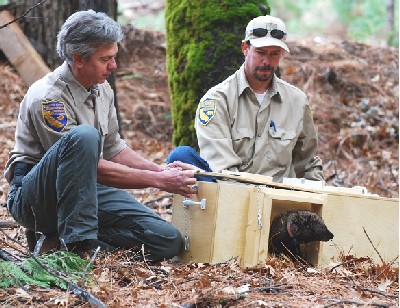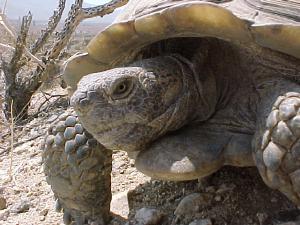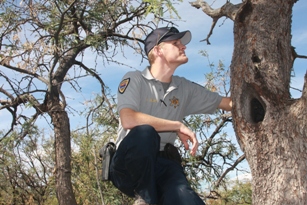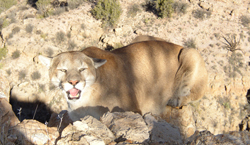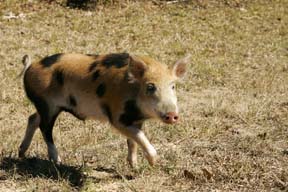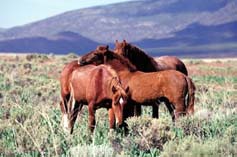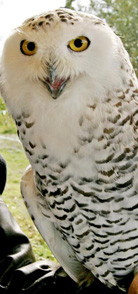Last week four more fishers were released in northern California, raising the number of fishers released to 39 in the Stirling City area in the past two years, says an article in the Contra Costa Times. With the release of the last four fishers, the program is now in a four-year monitoring phase, the article says.
Pacific fishers, unlike their eastern cousins, are thought to be dependent on old growth forests. The project area is anything but pristine, however. The land is owned by Sierra Pacific, a timber company. The article quotes a Sierra Pacific vice president saying that if the project is successful, it will show that fishers can survive on managed landscapes, which will mean Sierra Pacific can continue to log in fisher habitat, even if the animal is listed under the Endangered Species Act.
The article says the company will be allowed to do that anyway:
By hosting the fishers, the company, which owns about 1.6 percent of California’s land, also gets a 20-year guarantee it will be able to cut trees even if fishers are listed as endangered.
Read the entire article here. There is also a slideshow of the recent release.
Here’s the California Department of Fish and Game’s description of the project. It includes a link to more detailed information in a .ZIP file and to the 2010 annual report.
Photo: Fisher release, courtesy of California Department of Fish and Game.

